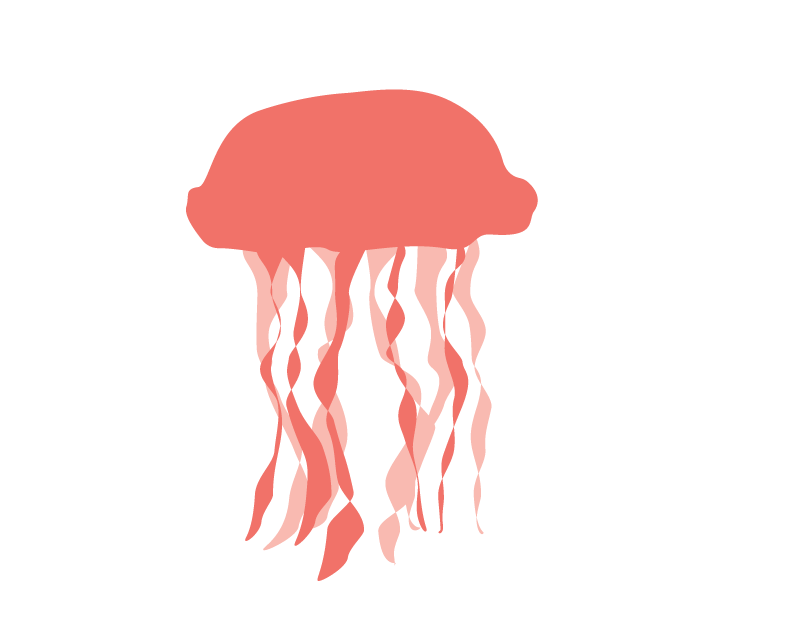
This image has format transparent PNG with resolution 800x624.
You can download this image in best resolution from this page and use it for design and web design.
Jellyfish PNG with transparent background you can download for free, just click on download button.
Jellyfish or jellies are softbodied, free-swimming aquatic animals with a gelatinous umbrella-shaped bell and trailing tentacles. The bell can pulsate to acquire propulsion and locomotion. The tentacles may be utilized to capture prey or defend against predators by emitting toxins in a painful sting. Jellyfish species are classified in the subphylum Medusozoa which makes up a major part of the phylum Cnidaria, although not all Medusozoa species are considered to be jellyfish.
Jellyfish are found in every ocean, from the surface to the deep sea. Scyphozoans (the "true jellyfish") are exclusively marine, and some hydrozoans with a similar appearance live in freshwater. Large, often colorful, jellyfish are common in coastal zones worldwide. Jellyfish have roamed the seas for at least 500 million years, and possibly 700 million years or more, making them the oldest multi-organ animal.
Most jellyfish do not have specialized digestive, osmoregulatory, central nervous, respiratory, or circulatory systems. The manubrium is a stalk-like structure hanging down from the centre of the underside, often surrounded by oral arms, which connects with the mouth/anus at the base of the bell. This opens into the gastrovascular cavity, where digestion takes place and nutrients are absorbed. It is joined to the radial canals which extend to the margin of the bell, where tentacles are attached. Nematocysts, which deliver the sting, are located mostly on the tentacles; scyphozoans also have them around the mouth and stomach. Jellyfish do not need a respiratory system since their skin is thin enough that the body is oxygenated by diffusion. They have limited control over movement, but can use their hydrostatic skeleton to navigate through contraction-pulsations of the bell-like body; some species actively swim most of the time, while others are mostly passive. Depending on the species, the body contains between 95 and 98% water. Most of the umbrella mass is a gelatinous material — the jelly — called mesoglea which is surrounded by two layers of protective skin. The top layer is called the epidermis, and the inner layer is referred to as gastrodermis, which lines the gut.
In this page you can download free PNG images: Jellyfish PNG images free download